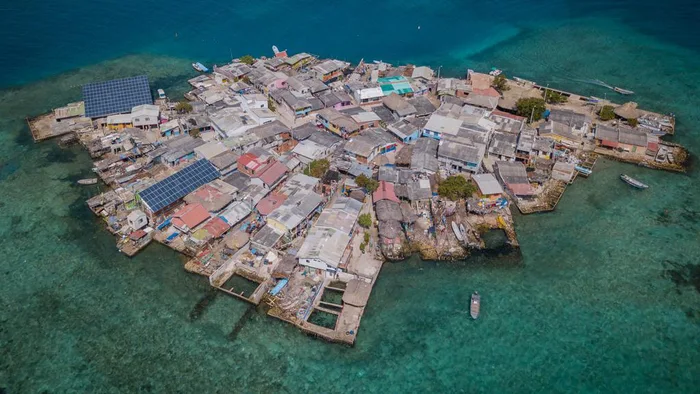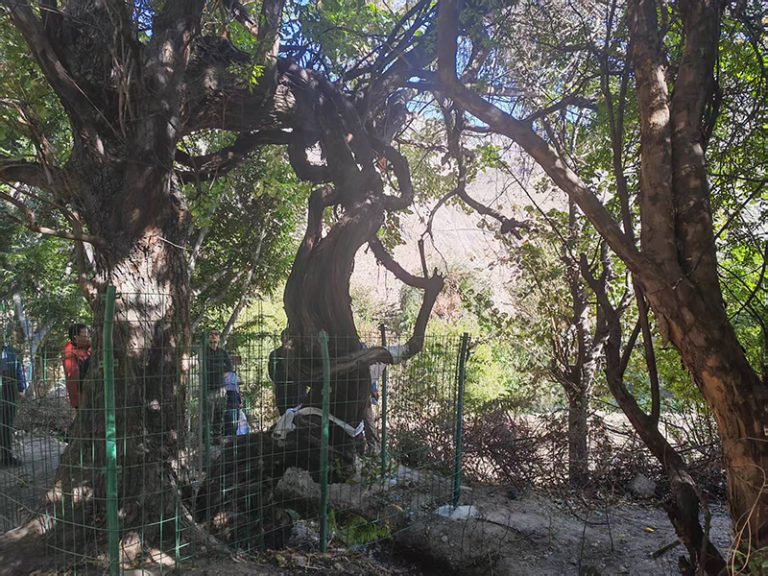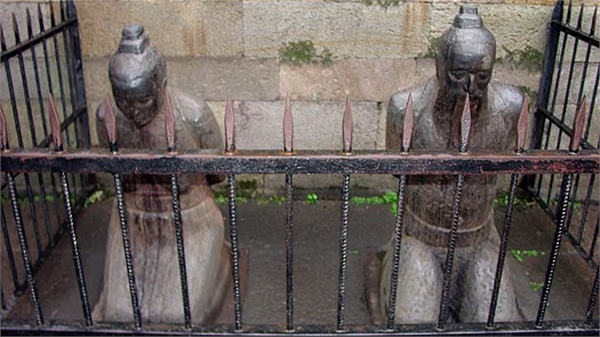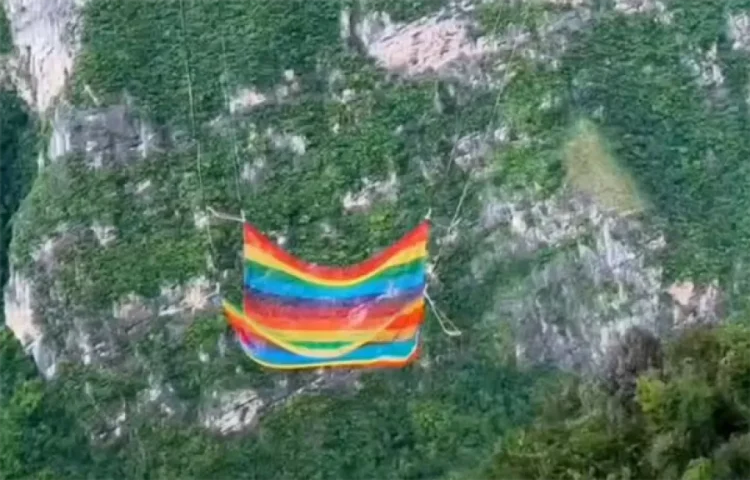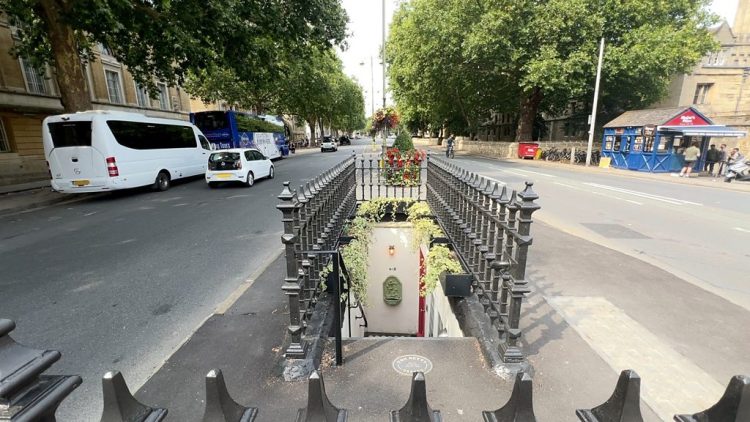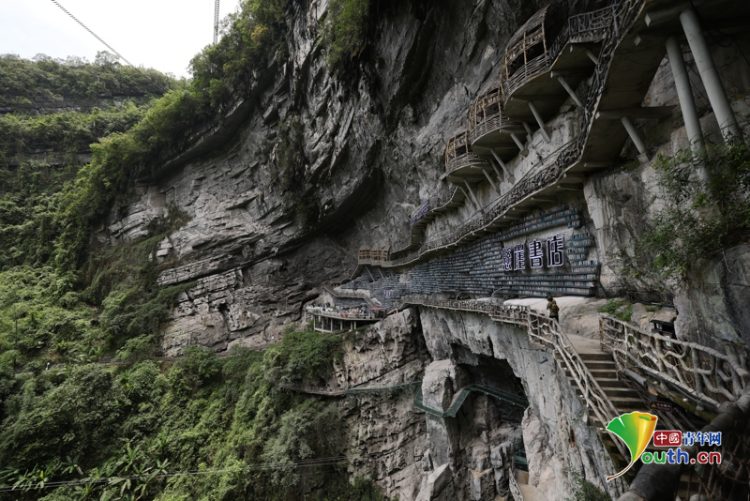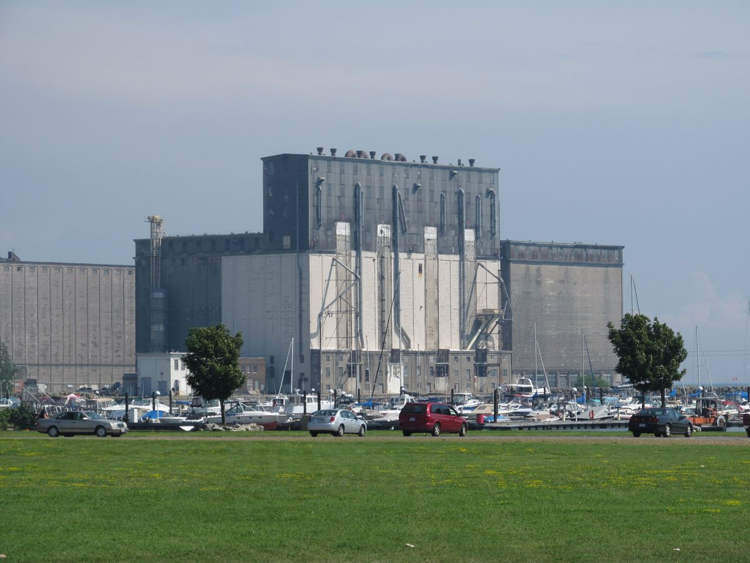At the foothills of the Caucasus Mountains in northwest Azerbaijan, lies Parigala, one of the world’s most impressive archeological mysteries. Carved into the nearly vertical face of a rock cliff, the centuries-old structure remains a mystery that hardly anyone knows anything about.
The idea that an amazing site like Parigala (literally ‘Fairy Castle’ in Azerbaijani) is one of Azerbaijan’s lesser-known archeological treasures baffles the mind. That has to do both with the country’s still underdeveloped tourism industry, and the fact that you need to go off the beaten path to reach Parigala. That fits the general theme of the place, which is inaccessibility, but still, hopping into a four-wheel drive vehicle to navigate the narrow tracks leading up to it, then climbing up a very slippery slope to a steep, leaf-covered and forested hillside just to reach the cliff it’s carved into, is definitely not for everyone.
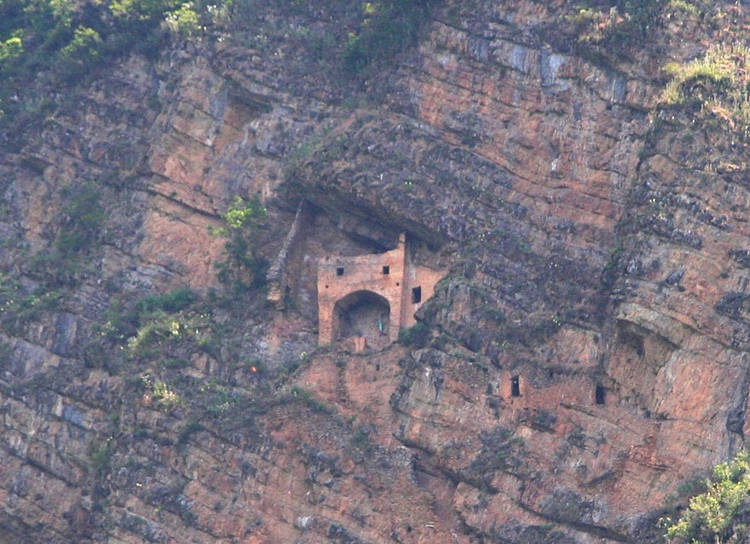
Photo: Interfase/Wikimedia Commons
Azerbaijan’s mysterious fairy castle consists of a limestone brick façade sealing the entrance to a cave dwelling made up of three rooms. That’s according to the few information sources on Parigala, because very few people have actually dared make the climb to explore the place for themselves.
According to a 2005 article in Azerbaijan International, the last known person to have climbed rock wall that houses Parigala was a local man by the name of Mammad Darudov, who had managed the feat in the 1970s. No one had done it since, despite the two time Azerbaijan wrestling champion’s efforts to make the climb somewhat less difficult by erecting a makeshift ladder and placing a slim tree trunk at the base to make it easier to reach.
The one thing that everyone can agree on is that no one really knows who or why they built Fairy Castle. The most popular explanation is the legend that inspired the name of the site, Fairy Castle. Dating back to the days of Mongol conqueror Genghis Khan, the folk tale speaks of a local ruler whose daughter was chosen by Genghis Khan to become one of his wives. When he asked her if she knew another more beautiful than her, the young girl told the Mongol leader of her sister, Pari.
Hearing that Genghis Khan was coming to add her to his harem, Pari had local workers build a castle for her high up on a cliff, where the Mongols couldn’t reach her. She took refuge there, but with the Mongol army camped at the foot of the cliff and her capture imminent, Pari jumped from the castle to her death. It’s a familiar tale, but sadly it’s the only available information about the history of Parigala.
One thing is for sure, whoever built Parigala wanted privacy and safety. Even today, with all the mountaineering equipment available, reaching Fairy Castle is a daunting task for anyone. Any army trying to take this place would have their work cut out, as the steep ascent alone would pose a significant challenge, not to mention the defenders above able to take out anyone approaching. But whether this place ever had anyone defending or conquering it remains a mystery.
Parigala sits at the top of an enclosed stairway built of rough limestone bricks, cemented together with a very strong mortar that adheres to the mountain itself. The top of the stairway has apparently collapsed, with makes reaching the castle even more dangerous than before. According to journalist Ronnie Gallagher, climbing past this point is not for the faint-hearted as it requires incredible agility and mountaineering skills.
According to Mammad Darudov, one of the few people to see the inside of Parigala in the last few decades, the place is made up of three rooms, each with their own windows, and connected to the main castle by walled walkways is a second structure with two additional rooms.
Considering that Parigala is estimated to date back to the Albanian Caucasian period (between the 4th and 8th centuries), it has weathered the passing of time and the elements surprisingly well. The mystery of its origins and purpose may never be uncovered, but that’s part of its charm now.

